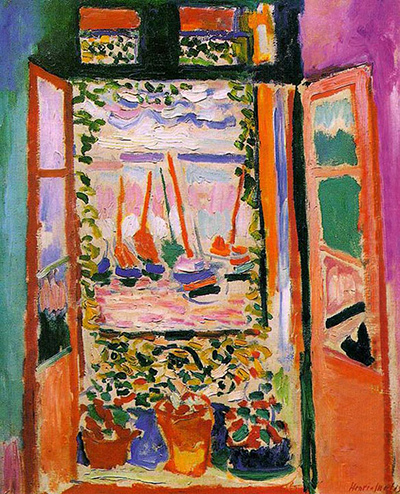Henri Matisse painted Open Window in the summer of 1905, when he and André Derain worked together near France’s border with Spain.
A diminutive but explosive oil on canvas, it is celebrated as one of the most significant early paintings of the Fauve school. Distinguished by a vibrant palette of saturated, pure colours and generous brushstrokes, the effect of a Fauve painting is one of spontaneity.
The light flooded scene in Open Window is bright and inviting. Blue-hulled vessels float on pink waves below a sky banded with turquoise, pink, and mauve. These surprising colours provoked a violent reaction that year at the Salon d'Automne in Paris. Derain would later liken the colours to “sticks of dynamite”.
In Open Window colours work in complementary pairs – orange-red masts with blue hulls, red blossom among green leaves, opposing reflections of turquoise and pink. Complements such as these become more intense when placed next to each other. Also from this period, Matisse’s The Woman with a Hat contains a similar colour relationship in the background.
Isolated by barren areas of canvas, the colour combinations in Open Window generate a visual effect that fixes the eye to the surface. Matisse represented each area of the image – the interior of the room, the window, the balcony, the harbour view with a distinctly different handling of the brush, creating an overall surface effect of pulsating textiles.
The angular, out-flung doors make the scene inviting, but different brushstrokes in each ‘zone’ create a rich tapestry of rhythms which evoke tension: wide sweeps in the room’s interior, short wavy lines or dabs in the view beyond.
Finally, the composition of the work is a series of frames within frames: the wall contains the window; the frames, the middle ground; and the balcony crops the landscape. The open window and the painting-window metaphor would go on to become a central motif in Matisse’s works.




